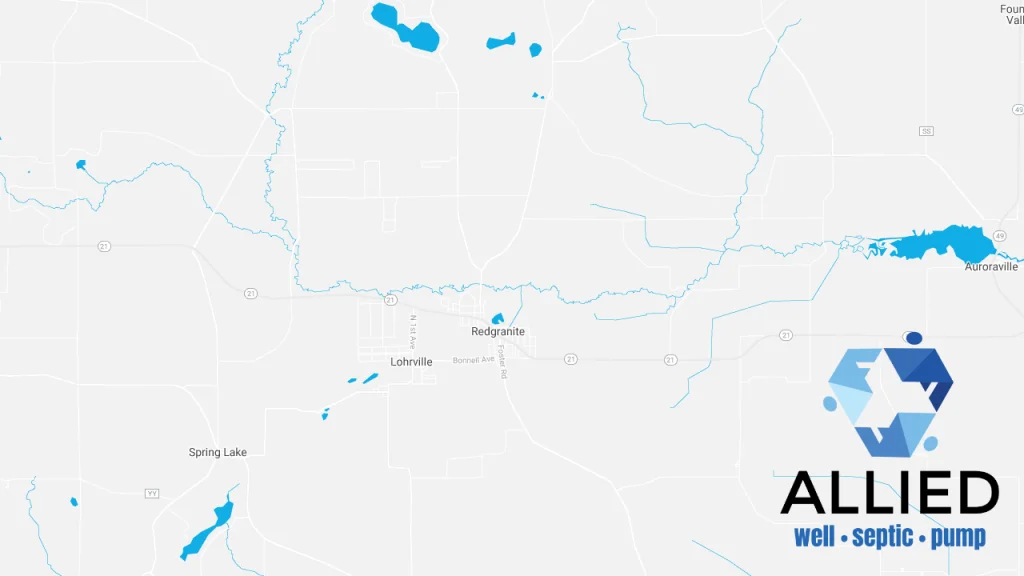We install new and replacement septic systems in Redgranite, WI. Homes in Waushara county that lack municipal sewer service must provide their own on-site waste water treatment. Household wastewaters may contain many undesirable substances such as disease-causing bacteria, infectious viruses, household chemicals, and excess nutrients such as nitrogen and phosphorus. Septic systems are designed to purify wastewater before it enters Wisconsin’s groundwater. Do you need a new or replacement septic system?
Do you also need a well? Ask us about a well and septic package deal to help you save money on your project.
Pro Tip
As a homeowner, there are several steps you can take to prevent your home’s septic system from impacting nearby water sources. Some are simple while others can be more involved and expensive. Consult with a professional in your area (or give us a call!) before making significant upgrades to your septic system.
Septic Systems In Redgranite Area

Septic Systems – Other Areas Served
We provide replacement and new septic system installs to Redgranite and surrounding areas, including West Bloomfield, Wautoma and Wild Rose, WI. If your private sewage system must be replaced, don’t destroy the old one. In some cases, the capacity of the soil to absorb effluent may be restored by allowing the system to rest. The ponded effluent will eventually drain; the clogging mat will dry out, and will break up in natural physical or chemical processes. Provision could then be made to alternate between the new and the old systems. This will prolong the life of both systems.
You Should Know
We use the chambered system as an alternative design to the older gravel/stone systems. The primary advantage of the chamber system is increased ease of delivery and construction. They are also well suited to areas with high groundwater tables, where the volume of influent to the system is variable (e.g., at a vacation home or seasonal inn), in an area where gravel is scarce, or in areas where other technologies such as plastic chambers are readily available (like Wisconsin).
Remember that all the water you use in your home must be absorbed and disposed of by your private sewage system. You can extend a system’s life by lowering the amount of water you use. Federal law requires new toilets, faucets, and other fixtures to be water-conserving fixtures. Thus, replacing old fixtures can significantly reduce water use.
Excessive water use or leaking fixtures are common sources of system overloading. Preventative maintenance on existing fixtures, installation of water-reducing devices or water-conserving fixtures will aid in correcting the problems. Foundation drainage or surface runoff should be kept out of private sewage systems.
There are some fixtures that conserve more water than others. Toilets are available that use as little as two quarts of water per flush versus the four gallons per flush that many older toilets use.
Water-conserving fixtures can save hundreds of dollars each year if a building uses a holding tank.
What Is A Leach Field?
A leach field, also known as a drain field, is an underground array of perforated pipes or chambers adjacent to the septic tank. The leach field is responsible for removing contaminants and impurities from waste water after it leaves the septic tank.
Why Is My Lawn Greener Over My Drain Field?
If the grass is usually greener over your soil absorption system, it’s time to call a credentialed plumber (like us!) to check out your system. Failing systems threaten health and water quality.u003cbru003eu003cbru003eThe grass usually isn’t greener over the tank, but it may be the first area of bright green in your yard in the spring. This is not due to effluent from the tank, but due to the warmth radiating from the tanks contents causing the soil to warmth up quicker in the surrounding areas.
